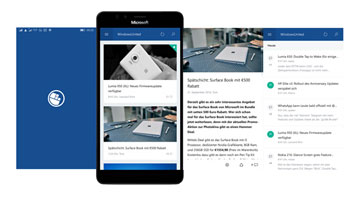Microsoft hat sich ein neues Patent gesichert, dass das Display eines Gerätes als Lautsprecher verwendet. Eine solche Nutzung des Bildschirms ist vor allem bei Randlos-Displays nützlich, die keinen Platz für Lautsprecher bieten.
Piezoelektrischer Lautsprecher: Xiaomi als Vorreiter
Es gibt bereits Hersteller, die ihre Smartphonedisplays als Lautsprecher benutzt haben. So besitzt das Xiaomi Mi Mix einen quasi randlosen Bildschirm, das durch einen piezoelektrischen Lautsprecher den Schall überträgt. Das vor kurzem veröffentlichte Vivo Apex nutzt eine ganz ähnliche Lösung, um Klang zu erzeugen.
Ein Auszug aus dem Microsoft-Patent:
It is commonly a requirement for mobile devices to provide both a visual display and audio output. Typically, mobile devices satisfy this requirement by having a visual display and a separate dedicated speaker or speakers. However, this approach can have the disadvantage that sufficient volume must be found within the mobile device to contain the visual display and the speaker or speakers. Further, in mobile devices having a large amount, or all, of a front face of the mobile device occupied by the visual display it can be difficult to find sufficient space on the front face for a speaker opening, forcing the speakers to be located on the sides or rear of the mobile device, where they direct sound away from a user.
A display surface structure comprises a deformable transparent surface layer, a visual display layer visible through the deformable transparent surface layer, a piezo-electric layer in mechanical communication with the deformable transparent surface layer, and a drive circuit in electrical communication with the piezo-electric layer. The drive circuit sends a drive signal to the piezo-electric layer to cause the piezo-electric layer to deform the deformable transparent surface layer and generate an audio output.
In one example, the present disclosure provides a display structure comprising: a deformable transparent surface layer; a visual display layer visible through the deformable transparent surface layer; a piezo-electric layer in mechanical communication with the deformable transparent surface layer; and a drive circuit in electrical communication with the piezo-electric layer, wherein the drive circuit is arranged to send a drive signal (406) to the piezo-electric layer which will cause the piezo- electric layer to deform the deformable transparent surface layer to generate an audio output.
Auch Microsoft beschreibt die Probleme von herkömmlichen Lautsprechern (es wird relativ viel Platz benötigt) und beschreibt als Lösung eine piezoelektrische Schicht im Display.
Kommt das Patent zum Einsatz?
Es ist nicht klar was Microsoft mit diesem Patent vorhat. Sicher, es könnte für das künftige „Surface Phone“ oder randlose Surfaces genutzt werden. Genausogut könnte Microsoft die Rechte dieser Technologie als Schutz vor anderen Herstellern gesichert haben. Oder aber um an anderen Herstellern Geld zu verdienen.
Die genauen Details des Patents, findet ihr hier .
via MSPU









Zusammen mit einem potenten „SurfacePhone“ und einer „Xbox-StreamingCloud“, eine feine Sache…
Das könnte theoretisch wirklich etwas Großes sein. 👍
Zahlt Xiaomi für das Mi Mix Patentgebühren an Microsoft? Zwei Patente für eine Sache wird es kaum geben.
Wieso nicht? Es kommt letztendlich auf die Umsetzung und nicht zwingend auf die verwendete Technologie an.
Ja, das stimmt. Egal wer von beiden dem anderen nachzog, da noch eine andere Umsetzung in dem engen Spielraum zu sehen, eine geniale Leistung.
Es kann sogar die identische Umsetzung sein, wenn beide Patente für unterschiedliche Länder gelten.
Doch, soweit ich weiß kann es gleiche Patente geben. Je nach Land erfolgt z.B. nur eine Form-Prüfung und grobe technische Überprüfung. Des weiteren werden Patente eine Zeit lang (18 Monate) geheim gehalten bevor sie veröffentlicht werden, wodurch eine Überschneidung möglich ist. Wer dann nun rechtmäßig Anspruch auf die „Erfindung“ hat, wird dann auf Grundlage der erteilten Patente vor Gericht geklärt. Hinzu kommt auch eine Einspruchsfrist die man einhalten muss.